 Ponderous and dull, this filmic adaptation of the famous graphic novel proves that great source material, a healthy budget, and technical competence are not enough to make a good movie. Some kind of cinematic vision is necessary; unfortunately, what passes for vision in the WATCHMEN film is a superficial sheen of special effects, production design, and photography put in the service of bone-crunching, bloody violence that totally fails to engage the audience in the plot or characters on an intellectual or even an emotional level. Consequently, instead of a sophisticated deconstruction of superhero mythology, we end up with a movie about things that go splat.
Ponderous and dull, this filmic adaptation of the famous graphic novel proves that great source material, a healthy budget, and technical competence are not enough to make a good movie. Some kind of cinematic vision is necessary; unfortunately, what passes for vision in the WATCHMEN film is a superficial sheen of special effects, production design, and photography put in the service of bone-crunching, bloody violence that totally fails to engage the audience in the plot or characters on an intellectual or even an emotional level. Consequently, instead of a sophisticated deconstruction of superhero mythology, we end up with a movie about things that go splat.
The screenplay by David Hayter and Alex Tse admirably retains big chunks of Alan Moore’s story, but that is less a blessing than a curse, and Moore is no doubt happy that his name appears nowhere on the credits (the film is officially based on the graphic novel “co-created by Dave Gibbons,” who provided the book’s art work). Moore’s tale was deliberately fragmented in a way that does not translate well to the screen. The plot thread of solving the murder of the Comedian served mostly as a excuse to tie together a series of flashbacks and character scenes that provided a sort of meditation on the superhero genre. In essence, Watchmen asked: What would happen if, instead of taking the genre conventions for granted, you took them seriously?
Unfortunately for the WATCHMEN movie, THE DARK KNIGHT has already flown through this territory and claimed it thoroughly. There is little left to do in terms of grounding the story in reality or adopting an adult tone toward the material; instead WATCHMEN comes across like a hyped-up teen’s idea of adult entertainment – which is to say, it’s loaded with sex and violence, sometimes together, but it’s movie sex and violence, without any kind of emotional resonance. There is some attempt to tie the plot together more tightly (the ticking clock toward nuclear confrontation between the U.S. and the U.S.S.R. is pushed into the foreground early and often), but the script still meanders down tangential roads for so long that the murder-mystery becomes almost forgotten.
Equally unfortunately, director Zach Snyder uses the material merely as an excuse to stage extended fight scenes featuring broken bones, slow-motion bullet hits, severed limbs, split skulls, and some bloody disintegrations just for spice. His interest in the drama is perfunctory at best, resulting in a ridiculously uneven pace: long, dull stretches of nothing interesting punctuated by sudden outbursts of action that no one cares about; the slam-bang-pow may jerk your eyelids open for a minute or two, but that’s not long enough to register why we should care which particular masked neurotic is winning/losing a fight with another masked neurotic.
This approach reaches its nadir near the end, when a series of nuclear blasts take out several major cities, and the film proves itself perfectly incapable of registering these events as a massive human tragedy; the explosions are merely another excuse for special effects spectacle of the most empty-headed variety.
Thematically, WATCHMEN is muddled. Set in an alternate reality where the U.S. won the Vietnam War and Richard Nixon is still president in 1985, it seems to be a satire on conservative nationalism, but the satire is mostly de-fanged as the film merely pokes fun at easy targets from the past. (The graphic novel, published as a series in 1986-87, was essentially contemporary.) One might charitably attempt to interpret the film’s presentation of 1985 as a mirror of our own contemporary world in general and the recently ended Bush presidency in particular, but the film does little to support this, apparently afraid of offending real-life conservative gasbags whose philosophy is – or at least was – mouthed by the characters.
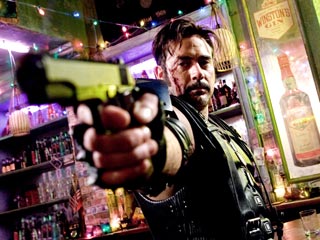
In the graphic novel, some of the Watchmen expressed McCarthyesque and/or Nixonian sentiments, blaming America’s problems on homosexuals, liberals, promiscuity, drugs, and campus unrest. In the film, although the Comedian remains an irredeemably brutish thug, little of the ultra-patriotic paranoia remains, except for some disparaging remarks about liberals from Rorschach. Moore at least wanted his readers to question whether they really would want masked vigilantes patrolling the streets, unfettered by concerns for due process; Snyder, Hater, and Tse are more than happy to absolve the Watchmen for any trespasses, apparently working on the theory that, when things get really bad, you just have to turn the mad dogs loose.
This involves presenting a view of the world that is cynical, bordering on hopeless. Superheroes make sense only in a universe where conventional law and order have failed to turn back the tide of criminality. At least in THE DARK KNIGHT, Batman hopes to bring Gotham to a point where the official lawmen can resume control; in WATCHMEN, you get the feeling that the filmmakers embrace the concept of Hell on Earth because it justifies the existence of the characters.
The problem is that, from the vantage point of 2009, it is hard to take seriously the idea that human nature is so fundamentally self-destructive that – if not for the intervention of some costumed adventurers – the world would inevitably ignite in a nuclear confrontation between the US. and the U.S.S.R. And outside of the nuclear threat, there is little in the world of WATCHMEN that can be taken to justify the Travis Bickle-like attitude that society is nothing but a giant human cesspool.
Without a proper context, the Watchmen really don’t belong in this world – which could have been an interesting point to make if the film had dared to go there, but it doesn’t. Instead, it lumbers on, oblivious, indulging in the now de rigeur (and somewhat passe) post-9/11 get-tough attitude (e.g., if you want information from a reluctant witness, torture it out of them, because we all know that people tell the truth when they’re being tortured).
Revealingly, one of the few portions of the film that actually works occurs when Rorshach is framed for murder and sent to prison. Trapped in a world of cut-throat murderers eager to kill him (many of whom he sent to prison), Rorschach is at last in an environment that totally justifies his brutal methods, allowing the audience to identify with and root for him in a way they otherwise cannot.
The prison sequence also contains a nicely staged fight scene with Nite Owl and Silk Spectre battling rioting inmates. For once, Snyder resists the urge to focus on brutality, opting instead of a balletic approach that seeks to recreate the impressive feel of Bruce Lee battle with the guards in ENTER THE DRAGON.
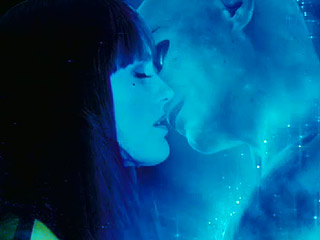
The film also deserves some credit for faithfully translating Dave Gibbons artwork into three-dimensions: the realization of Dr. Manhattan is particularly impressive, and you have to admire the nerve it took to stick to the concept in the comic books, which often and unapologetically presented the character in the nude. (We have often heard complaints about the ratio of male-to-female nudity on screen; this is one film that seeks to set the balance straight.)
Other than that, WATCHMEN is a dreary, lifeless affair. It falls prey to the worst strain of fascism underlying superhero mythology: the idea of the public at large as a great unwashed mass of looters, rioters, and criminals who need to be kept in line by their superiors – by superheroes who resent that their efforts are not appreciated by the people they bully. These characters think of themselves as moral guardians and righteous crusaders, but some of them are clearly no better – in fact, may be much worse – than the criminals they hunt.
That some of these superheroes are bitter, violent thugs is presented with an admirably brutal honesty – but to no real point. Their less extreme colleagues, elevating esprit de corps over other considerations, will overlook their excesses; ultimately, their failings will be swept under the cape, as if raping a colleague and murdering a woman pregnant with your child is nothing but a minor indiscretion of youth, something to be vaguely regretted or more likely forgotten. In a way, it seems sadly appropriate that WATCHMEN would come out two days after Republican lawyer David Rifkin testified before the senate regarding the Bush administration’s conduct of the War on Terror:
“Yes, mistakes were made. Yes, some bad things happened. But compared with the historical baseline of past wars, the conduct of the United States in the past eight years…has been exemplary.”
Let’s hope this is cinema’s last gasp apology for a discredited political philosophy in which moral relativism masquerades as moral absolutism, in which the moral standards vary according to who is on our side, and in which loyalty to your tribe supersedes equality under the law. Do we really need films to tell us that certain people are better than the rest and that, therefore, they deserve preferential consideration of their actions?
Political undertones aside, WATCHMEN fails because it loses the battle in its effort to present superheroes in a unique, original way. Attempting to render its characters in human terms, it gives us superheroes who are not particularly super or heroic, neither believably human nor enjoyably larger than life. Consequently, WATCHMEN is neither entertaining escapism nor moving drama, neither a successful genre piece nor a clever revisionist take. It truly is the worst of all possible worlds.
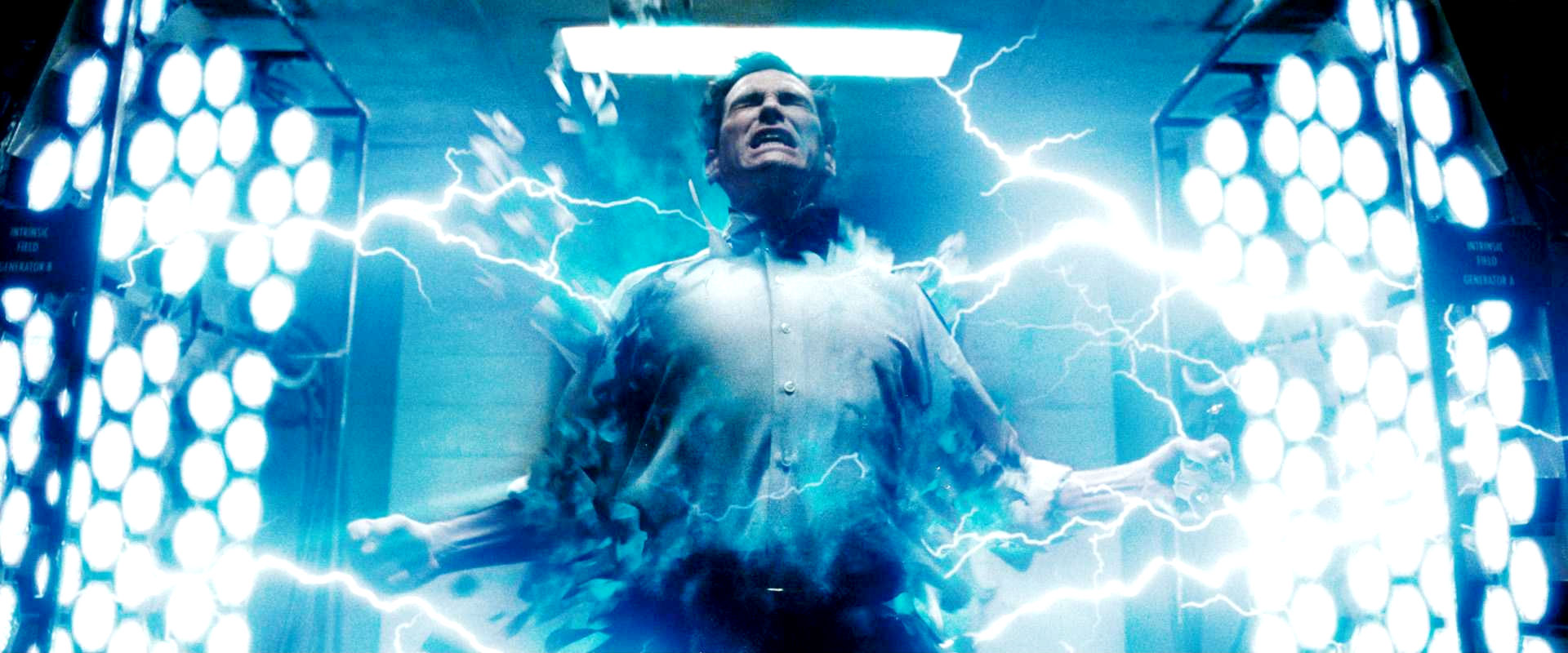
WATCHMEN (2009). Directed by Zach Snyder. Screenplay by David Hayter and Alex Tse, based on the graphic novel byAlan Moore (uncredited) and Dave Gibbons. Cast: Malin Akerman, Billy Crudup, Matthew Goode, Jackie Earle Haley, Jeffrey Dean Morgan, Patrick Wilson, Carla Guigino, Matt Frewer, Stephen McHattie, Laura Mennel.
[serialposts]
 Less a remake than just another tired sequel, the new film puts Jason through the same old moves with all the finese of a blind choreographer directing an arthritic dancer.
Less a remake than just another tired sequel, the new film puts Jason through the same old moves with all the finese of a blind choreographer directing an arthritic dancer.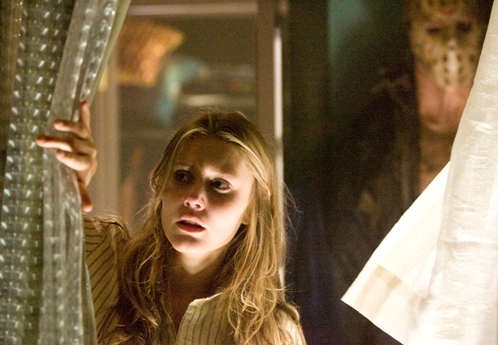
 Whether you go through the looking glass, down the rabbit hole, over the rainbow, or into the labyrinth, you are bound to encounter wonders beyond your imagination, sights and sounds that impress the senses and embed themselves upon the brain with all the enchantment of a beautiful dream, but somewhere in our minds we know that dreams are not real and that if something seems too good to be true, inevitably it is. This is the simple lesson of CORALINE, the amazing new stop-motion film from Henry Selick (director of Tim Burton’s
Whether you go through the looking glass, down the rabbit hole, over the rainbow, or into the labyrinth, you are bound to encounter wonders beyond your imagination, sights and sounds that impress the senses and embed themselves upon the brain with all the enchantment of a beautiful dream, but somewhere in our minds we know that dreams are not real and that if something seems too good to be true, inevitably it is. This is the simple lesson of CORALINE, the amazing new stop-motion film from Henry Selick (director of Tim Burton’s 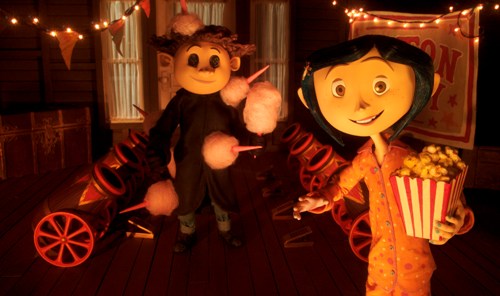

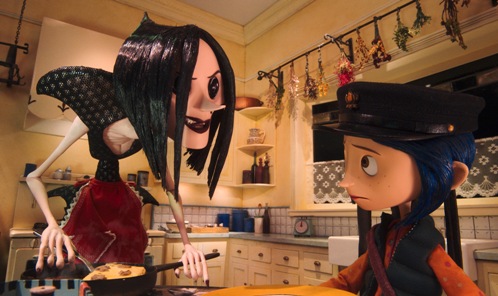
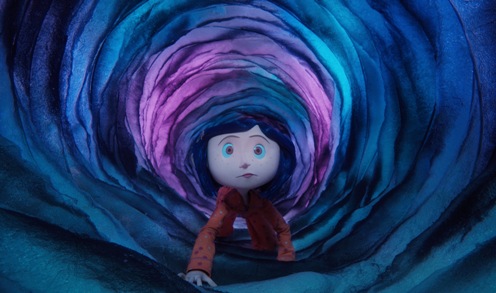
 By the diminishing standards of American remakes of Asian ghost stories – a phenomenon that descended to the dismal depths of the infernal gulf with last year’s not so terrifying trio of ONE MISSED CALL, THE EYE, and SHUTTER – THE UNINVITED must be reckoned a kind of success, though not an exalted one. This redo of the South Korean art house hit
By the diminishing standards of American remakes of Asian ghost stories – a phenomenon that descended to the dismal depths of the infernal gulf with last year’s not so terrifying trio of ONE MISSED CALL, THE EYE, and SHUTTER – THE UNINVITED must be reckoned a kind of success, though not an exalted one. This redo of the South Korean art house hit 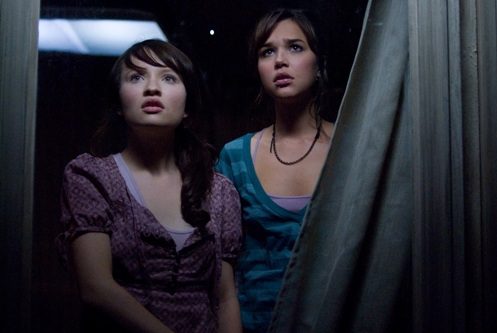

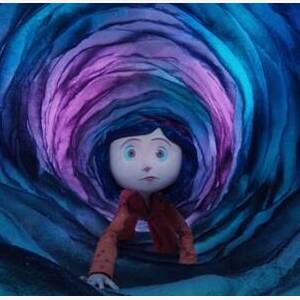
 HARRY POTTER AND THE HALF-BLOOD PRINCE: The sixthinstallment of the franchise hits the big screen, featuring a maturing approach to the story thanks to the growth of the characters. Working from a screenplay adapted by Steve Kloves, David Yates directed Daniel Radcliffe, Rupert Grint, Emma Watson, Jim Broadbent, Michael Gambon, Robbie Coltrane, Alan Rickman, and David Thewlis. Warner Brothers releases on July 17.
HARRY POTTER AND THE HALF-BLOOD PRINCE: The sixthinstallment of the franchise hits the big screen, featuring a maturing approach to the story thanks to the growth of the characters. Working from a screenplay adapted by Steve Kloves, David Yates directed Daniel Radcliffe, Rupert Grint, Emma Watson, Jim Broadbent, Michael Gambon, Robbie Coltrane, Alan Rickman, and David Thewlis. Warner Brothers releases on July 17.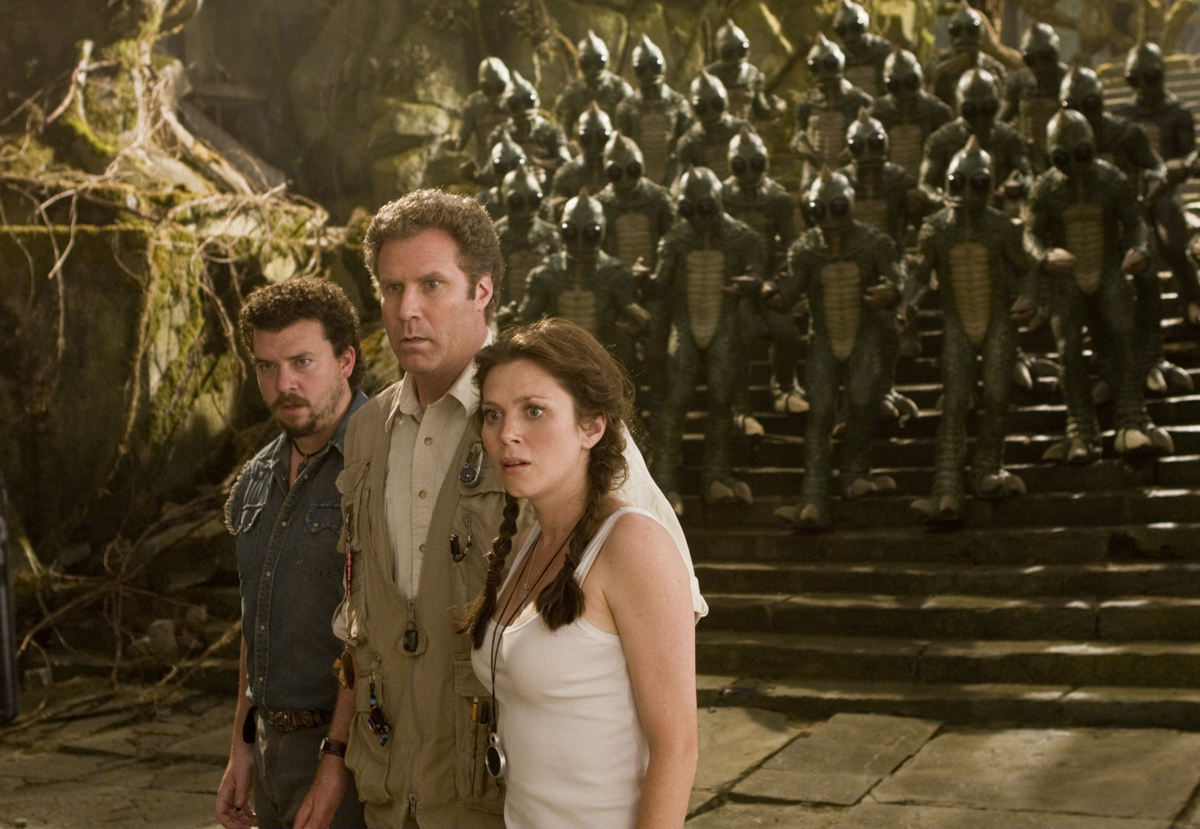

 PUSH: Paul McGuigandirects Camilla Belle, Dakota Fanning, Chris Evans in this Summit Entertainment production. In Hong Kong, a trio of young people with special abilities are pursued by a clandestine U.S. government agency who wants the gifted ones back in their fold. Release date: February 6.
PUSH: Paul McGuigandirects Camilla Belle, Dakota Fanning, Chris Evans in this Summit Entertainment production. In Hong Kong, a trio of young people with special abilities are pursued by a clandestine U.S. government agency who wants the gifted ones back in their fold. Release date: February 6.
 TERMINATOR SALVATION: McG (CHARLIES ANGELS) directs this continuation of the TERMINATOR franchise. Christian Bale and Sam Worthington star in this tale of the human resistance that John Connor leads in the post-apocalyptic future. Warner Brothers releases on May 22.
TERMINATOR SALVATION: McG (CHARLIES ANGELS) directs this continuation of the TERMINATOR franchise. Christian Bale and Sam Worthington star in this tale of the human resistance that John Connor leads in the post-apocalyptic future. Warner Brothers releases on May 22. TRANSFORMERS – REVENGE OF THE FALLEN: Director Michael Bay has finally found a level where his skills are perfectly suited to his audience; hence he returns for a second go-round, with the giant transforming robots from outer space. Also on board are Shia LaBeouf back as Sam Witwicky and Megan Fox. Ehren Kruger & Roberto Orci & Alex Kurtzman wrote. DreamWorks and Paramount split the distribution, which includes IMAX engagements. June 26.
TRANSFORMERS – REVENGE OF THE FALLEN: Director Michael Bay has finally found a level where his skills are perfectly suited to his audience; hence he returns for a second go-round, with the giant transforming robots from outer space. Also on board are Shia LaBeouf back as Sam Witwicky and Megan Fox. Ehren Kruger & Roberto Orci & Alex Kurtzman wrote. DreamWorks and Paramount split the distribution, which includes IMAX engagements. June 26. WATCHMEN: Working from a screenplay by David Hayter and Alex Tse, Zack Snyder directed this adaptation of the famous graphic novel by Alan Moore (who decicedly did not give his blessing to the film). Malin Akerman, Billy Crudup, Matthew Goode, Carla Gugino, Jackie Earle Haley, and Jeffrey Dean Morgan fill out the cast. Now that the legal dispute between 20th Century Fox and Warner Brothers has been settled, WB can go ahead with their plan to release the film on March 6.
WATCHMEN: Working from a screenplay by David Hayter and Alex Tse, Zack Snyder directed this adaptation of the famous graphic novel by Alan Moore (who decicedly did not give his blessing to the film). Malin Akerman, Billy Crudup, Matthew Goode, Carla Gugino, Jackie Earle Haley, and Jeffrey Dean Morgan fill out the cast. Now that the legal dispute between 20th Century Fox and Warner Brothers has been settled, WB can go ahead with their plan to release the film on March 6. Dylan Walsh, Sela Ward, and Penn Badgleystar in this horror-thriller about a military student whose mother takes up with a mysterious man – a normal looking guy who goes a bit crazy when his new family fails to live up to his ideal of perfection. Nelson McCormick directs. J. S. Cardone wrote the new screenplay, based on Donald Westlake’s script for the 1987 gem starring Terry O’Quinn. It is hard to imagine a re-do living up to the original. Screen Gems.
Dylan Walsh, Sela Ward, and Penn Badgleystar in this horror-thriller about a military student whose mother takes up with a mysterious man – a normal looking guy who goes a bit crazy when his new family fails to live up to his ideal of perfection. Nelson McCormick directs. J. S. Cardone wrote the new screenplay, based on Donald Westlake’s script for the 1987 gem starring Terry O’Quinn. It is hard to imagine a re-do living up to the original. Screen Gems. Paramount has delayed its previously announced August release of this horror-thriller in the U.S. Instead CASE 39 will makes it debut in New Zealand on August 13, followed by Australia on August 27. After opening in Russia and Europe, the film will make its way to Britain on September 25. As for the U.S., no firm date is set, but the film is supposed to come out sometime this year.
Paramount has delayed its previously announced August release of this horror-thriller in the U.S. Instead CASE 39 will makes it debut in New Zealand on August 13, followed by Australia on August 27. After opening in Russia and Europe, the film will make its way to Britain on September 25. As for the U.S., no firm date is set, but the film is supposed to come out sometime this year.